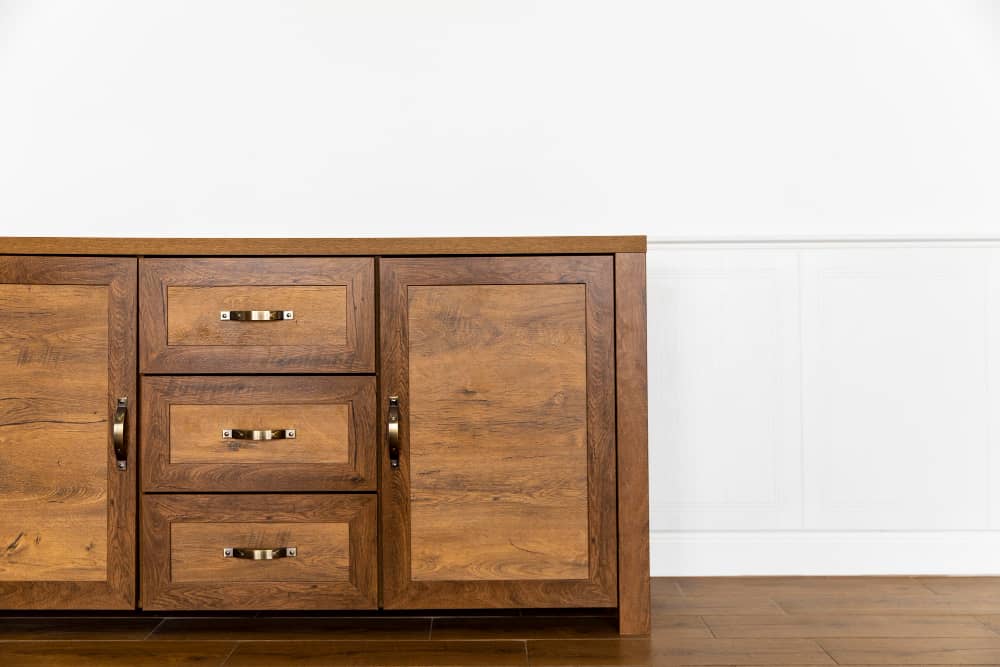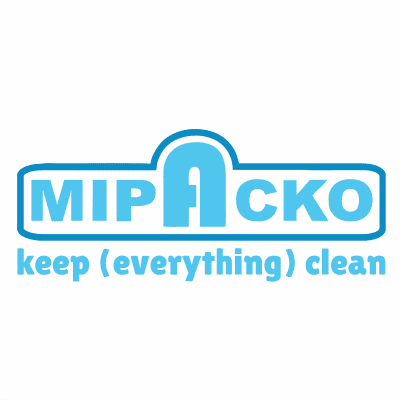Introduction
Closet Cleaning – A clean and organized closet is not only visually appealing but also has numerous benefits for your daily life. It allows you to easily find and access your clothes and accessories, saves time in getting ready, and helps prolong the lifespan of your clothing items. When it comes to cleaning your closet, using the right tools is essential. One such tool that proves to be highly effective is a microfiber cloth. In this article, we will explore the importance of keeping your closet clean and the benefits of using a microfiber cloth for closet cleaning.
1.1 Importance of Keeping Your Closet Clean
Maintaining a clean and clutter-free closet is crucial for several reasons:
- Efficient Use of Space: A clean and organized closet maximizes the available space, allowing you to store more items without them getting damaged or wrinkled. It enables you to utilize every inch of space effectively and avoid unnecessary clutter.
- Easy Access to Clothing and Accessories: A clean closet ensures that you can easily find and retrieve your clothes, shoes, and accessories. This saves you time and effort when getting dressed and helps you avoid the frustration of rummaging through a messy pile of items.
- Preservation of Clothing: A clean closet helps protect your clothing from dust, dirt, and potential damage. By keeping your clothes neatly hung or folded, you can prevent wrinkles, creases, and fabric distortion, ultimately extending the lifespan of your favorite pieces.
- Visual Appeal: A well-organized closet enhances the overall aesthetic appeal of your bedroom or dressing area. It creates a sense of order and tranquility, making it a pleasant space to start your day.
1.2 Benefits of Using a Microfiber Cloth for Closet Cleaning
When it comes to cleaning your closet, using a microfiber cloth offers several advantages:
- Superior Cleaning Performance: Microfiber cloths are known for their exceptional cleaning capabilities. The tiny fibers in the cloth trap and hold onto dust, dirt, and particles more effectively than traditional cleaning materials. This ensures a thorough cleaning of your closet surfaces, removing even the tiniest particles.
- Gentle on Surfaces: Microfiber cloths are soft and non-abrasive, making them safe to use on various closet surfaces such as shelves, drawers, and clothing racks. They won’t scratch or damage delicate materials, ensuring the longevity of your closet components.
- Absorbent and Quick-Drying: Microfiber cloths have excellent absorbency, allowing them to soak up spills and moisture effectively. This makes them ideal for cleaning any accidental spills or leaks that may occur in your closet. Additionally, microfiber cloths dry quickly, reducing the risk of mold or mildew growth.
- Environmentally Friendly: Microfiber cloths are a sustainable and eco-friendly choice for cleaning your closet. They can be reused multiple times, reducing the need for disposable cleaning materials. Furthermore, microfiber cloths require less water and cleaning solutions to achieve effective results, contributing to water conservation efforts.
Preparing for Closet Cleaning
Before you begin cleaning your closet, it’s essential to make necessary preparations to ensure an efficient and effective cleaning process. Here are some steps to follow:
2.1 Emptying and Sorting the Closet
Start by emptying your closet completely. Take out all the clothes, shoes, accessories, and other items stored inside. This step allows you to have a clear view of the closet’s interior and ensures thorough cleaning.
As you empty the closet, sort your belongings into categories. You can categorize them based on clothing type, season, or frequency of use. This sorting process will help you declutter and organize your closet more efficiently later.
2.2 Gathering Necessary Cleaning Supplies
To clean your closet effectively, gather the following cleaning supplies:
- Microfiber cloth: Choose a high-quality microfiber cloth specifically designed for cleaning purposes. Ensure it is clean and free from any debris or particles.
- Vacuum cleaner or broom: Use a vacuum cleaner with a brush attachment or a broom to remove dust, dirt, and cobwebs from the closet’s walls, shelves, and floor. This will help eliminate any loose debris before wiping with a microfiber cloth.
- Mild cleaning solution: Prepare a gentle cleaning solution by mixing a few drops of mild dish soap or a suitable all-purpose cleaner with warm water. Avoid using harsh chemicals that can damage your closet components or leave residue.
- Spray bottle: Fill a spray bottle with the diluted cleaning solution. This will allow you to apply the solution evenly on surfaces as needed.
- Soft-bristle brush: Have a soft-bristle brush on hand to gently scrub any stubborn stains or dirt buildup in hard-to-reach areas.
- Lint roller: Use a lint roller to remove lint, pet hair, or other small particles from clothing or fabric-lined shelves.
- Gloves and mask (optional): If you have sensitivities or allergies, consider wearing gloves and a mask to protect your skin and respiratory system while cleaning.
Read More : Simple Ways to Clean a Kitchen Sink and Drain
Dusting and Wiping Shelves and Surfaces
Once you have prepared your closet for cleaning, it’s time to focus on dusting and wiping down the shelves and surfaces. Using a microfiber cloth is an excellent choice for this task due to its superior dust-trapping and cleaning abilities. Here’s how you can effectively clean your closet using a microfiber cloth:
3.1 Removing Dust and Debris with a Microfiber Cloth
Start by using a dry microfiber cloth to remove dust and debris from the surfaces of shelves, drawers, and cabinets. Gently wipe the cloth over the surfaces, ensuring to reach corners and crevices where dust tends to accumulate. The microfiber cloth’s electrostatic properties will attract and trap dust particles, preventing them from resettling on the cleaned surfaces.
Remember to fold or rotate the cloth as you clean to expose fresh, clean areas. This ensures that you are not spreading dust around but rather capturing it within the cloth.
3.2 Wiping Down Shelves, Drawers, and Cabinets
After removing the initial layer of dust, it’s time to give your shelves, drawers, and cabinets a thorough wipe-down. Dampen a microfiber cloth with the diluted cleaning solution prepared earlier. Make sure the cloth is damp and not soaking wet to avoid any potential damage to wood or other materials.
Starting from the top shelf or the uppermost surface, wipe down each shelf, drawer, or cabinet surface using gentle, back-and-forth motions. Pay attention to removing any smudges, fingerprints, or sticky residue that may have accumulated.
For stubborn stains or dried spills, you can use a soft-bristle brush or gently scrub with the damp microfiber cloth. However, be cautious and test a small, inconspicuous area first to ensure it doesn’t cause any damage.
As you clean, periodically rinse the microfiber cloth in clean water to remove any accumulated dirt or cleaning solution. Wring it out thoroughly before continuing to wipe down the surfaces.
Continue this process for all the shelves, drawers, and cabinets in your closet, working your way from top to bottom. Take your time and be thorough, paying attention to detail to achieve a clean and organized closet space.
By using a microfiber cloth, you can effectively remove dust, dirt, and grime from your closet’s surfaces without the need for harsh chemicals or excessive scrubbing. In the next section, we will discuss how to clean and care for specific closet items, such as clothing, shoes, and accessories.
Cleaning and Organizing Clothing Items

After you have finished cleaning the shelves and surfaces of your closet, it’s time to focus on cleaning and organizing your clothing items. Here are some steps to follow:
4.1 Sorting and Decluttering Clothes
Begin by sorting through your clothes and decluttering them. Take out all the items from your closet and categorize them into different groups, such as tops, bottoms, dresses, and so on. As you go through each item, consider if you still wear it, if it fits well, and if it’s in good condition. Set aside any clothes that you no longer want or need.
This is an excellent opportunity to downsize your wardrobe and create more space in your closet. You can donate or sell the clothes that are still in good condition but no longer serve you.
4.2 Cleaning Stains and Spots on Clothing
Inspect your clothes for any stains or spots that need attention. Treat the stains promptly to increase the chances of successful removal. Follow the care instructions on the clothing labels and use appropriate stain removal techniques.
For example, you can pre-treat stains by applying a small amount of stain remover or laundry detergent directly to the affected area. Gently rub the fabric together or use a soft brush to work the product into the stain. Let it sit for a few minutes before washing the garment as usual.
If the fabric allows, consider using a gentle cycle or handwashing for delicate items. For tougher stains, you may need to repeat the stain removal process or seek professional cleaning assistance.
4.3 Folding and Arranging Clothes Neatly
Once your clothes are clean and dry, it’s time to fold and arrange them neatly in your closet. Folding clothes properly not only saves space but also helps prevent wrinkles and keeps your closet organized.
Use the KonMari folding method or any folding technique that works best for you. Fold each item carefully and place them in designated sections or storage solutions within your closet. You can also consider using storage organizers like drawer dividers or fabric bins to keep smaller items organized.
Arrange your clothes by category or color to make it easier to find what you need. This will not only create an organized and visually appealing closet but also save you time when getting dressed.
By sorting, cleaning, and organizing your clothing items, you can maintain a clutter-free and well-structured closet. In the next section, we will discuss how to clean and care for shoes and accessories to complete the overall cleanliness and organization of your closet.
Refreshing and Deodorizing the Closet
After cleaning and organizing your clothing items, it’s time to give your closet a refreshing touch and ensure it smells pleasant. Here are some methods to eliminate odors and keep your closet smelling fresh:
5.1 Eliminating Odors with Natural Methods
Natural methods can effectively eliminate odors in your closet without the use of harsh chemicals. Here are a few options you can try:
- Activated charcoal: Place a few activated charcoal pouches or briquettes in your closet. Activated charcoal helps absorb moisture and neutralize odors.
- Baking soda: Fill small bowls or fabric sachets with baking soda and place them inside your closet. Baking soda is known for its odor-absorbing properties.
- White vinegar: Fill a spray bottle with equal parts of white vinegar and water. Lightly spray the interior of your closet and let it air dry. Vinegar helps neutralize odors and eliminate bacteria.
Remember to test these methods in a small, inconspicuous area of your closet first to ensure they don’t cause any discoloration or damage to the materials.
5.2 Using Fresheners and Sachets for a Pleasant Scent
To add a pleasant scent to your closet, you can use natural fresheners or sachets. Here are a few options:
- Dried herbs and flowers: Create sachets using dried lavender, rosemary, or other fragrant herbs and flowers. Place them in your closet to infuse a gentle scent.
- Essential oils: Add a few drops of your favorite essential oil to cotton balls or fabric sachets and place them in your closet. Refresh the scent as needed.
- Store-bought fresheners: There are various commercial closet fresheners available in the market. Look for natural or eco-friendly options to minimize chemical exposure.
Be cautious when using scented products, as some people may be sensitive to strong fragrances. Opt for mild and natural scents to create a pleasant ambiance in your closet.
By incorporating these refreshing and deodorizing methods, you can keep your closet smelling clean and inviting. In the next section, we will discuss how to maintain the cleanliness and organization of your closet on a regular basis.
Handling Shoes and Accessories
6.1 Cleaning and Polishing Shoes with Microfiber Cloth
To keep your shoes looking clean and well-maintained, follow these steps:
- Remove any dirt or debris from the shoes by gently brushing them with a soft-bristled brush.
- Dampen a microfiber cloth with water and use it to wipe down the surface of the shoes. Make sure to clean both the upper part and the soles.
- For scuff marks or stains, apply a small amount of mild soap or shoe cleaner to the microfiber cloth and gently scrub the affected areas.
- Rinse the cloth thoroughly and wipe away any soap residue from the shoes.
- Allow the shoes to air dry completely before wearing or storing them.
- Once the shoes are dry, you can use a separate microfiber cloth to apply shoe polish or conditioner. Rub the polish in a circular motion to restore shine and protect the material.
6.2 Organizing and Storing Accessories Properly
Proper organization and storage of accessories in your closet can help you maintain their condition and accessibility. Consider the following tips:
- Use compartmentalized organizers or small storage boxes to keep accessories separate and prevent tangling or damage.
- Group similar items together. For example, store belts in one section, scarves in another, and jewelry in designated containers.
- Hang accessories that are prone to wrinkling, such as ties or delicate scarves, on hooks or hangers to keep them wrinkle-free.
- Utilize drawer dividers or inserts to keep smaller accessories, like socks or sunglasses, neatly separated.
- Label or color-coordinate storage containers to easily identify and locate specific accessories.
By implementing these practices, you can ensure that your shoes and accessories remain clean, organized, and easily accessible within your closet.
Maintaining a Clean and Tidy Closet
7.1 Establishing Regular Cleaning Routine
To maintain a clean and tidy closet, it’s important to establish a regular cleaning routine. Here are some steps to follow:
- Set a specific schedule: Determine how often you want to clean your closet. It can be weekly, bi-weekly, or monthly, depending on your preference and the amount of usage your closet gets.
- Declutter regularly: Take the time to go through your clothing and belongings regularly to remove any items that you no longer need or use. Donate or sell them to keep your closet clutter-free.
- Dust surfaces: Use a microfiber cloth or a duster to remove dust from shelves, racks, and other surfaces inside the closet. Start from the top and work your way down to avoid spreading dust onto already cleaned areas.
- Vacuum or sweep the floor: If your closet has a floor, vacuum or sweep it to remove any dirt or debris that may have accumulated.
- Wipe down hangers and hooks: Clean the hangers and hooks inside the closet using a damp microfiber cloth. This helps remove any dust or residue that may have accumulated on them.
7.2 Tips for Preventing Dust and Clutter Buildup
Prevention is key to maintaining a clean and tidy closet. Here are some tips to prevent dust and clutter buildup:
- Use storage containers: Store items in clear plastic bins or storage containers to protect them from dust and keep them organized. Label the containers for easy identification.
- Close the closet door: Keep the closet door closed when not in use to prevent dust from settling on your belongings.
- Use garment bags: Store special occasion or seasonal clothing items in garment bags to protect them from dust and potential damage.
- Avoid overstuffing: Avoid cramming too many clothes or items into your closet. Leave enough space for air circulation, which helps prevent dust buildup.
- Use drawer liners: Line the drawers of your closet with drawer liners to protect your clothing from dust and keep them smelling fresh.
By following these tips and establishing a regular cleaning routine, you can maintain a clean and organized closet, making it easier to find what you need and prolonging the lifespan of your clothing and accessories.
Conclusion
In conclusion, keeping your closet clean and organized is essential for maintaining a tidy and functional space. By using a microfiber cloth for cleaning, you can effectively remove dust and dirt without causing any damage to your belongings. Additionally, following a step-by-step cleaning process, including dusting shelves, wiping surfaces, organizing clothes, and refreshing the closet, ensures a thorough and efficient cleaning session.
Regular maintenance and preventive measures, such as establishing a cleaning routine and implementing strategies to prevent dust and clutter buildup, are key to keeping your closet in top condition. By taking the time to declutter, store items properly, and incorporate refreshing techniques like using natural fresheners, you can create a clean and inviting atmosphere in your closet.
Remember, a well-maintained closet not only enhances the aesthetics of your space but also makes it easier to find and access your clothing and accessories. So, put these tips into practice and enjoy a clean, organized, and fresh-smelling closet that brings joy and efficiency to your daily routine.
Read More : 10 Tips for Quick and Efficient House Cleaning





